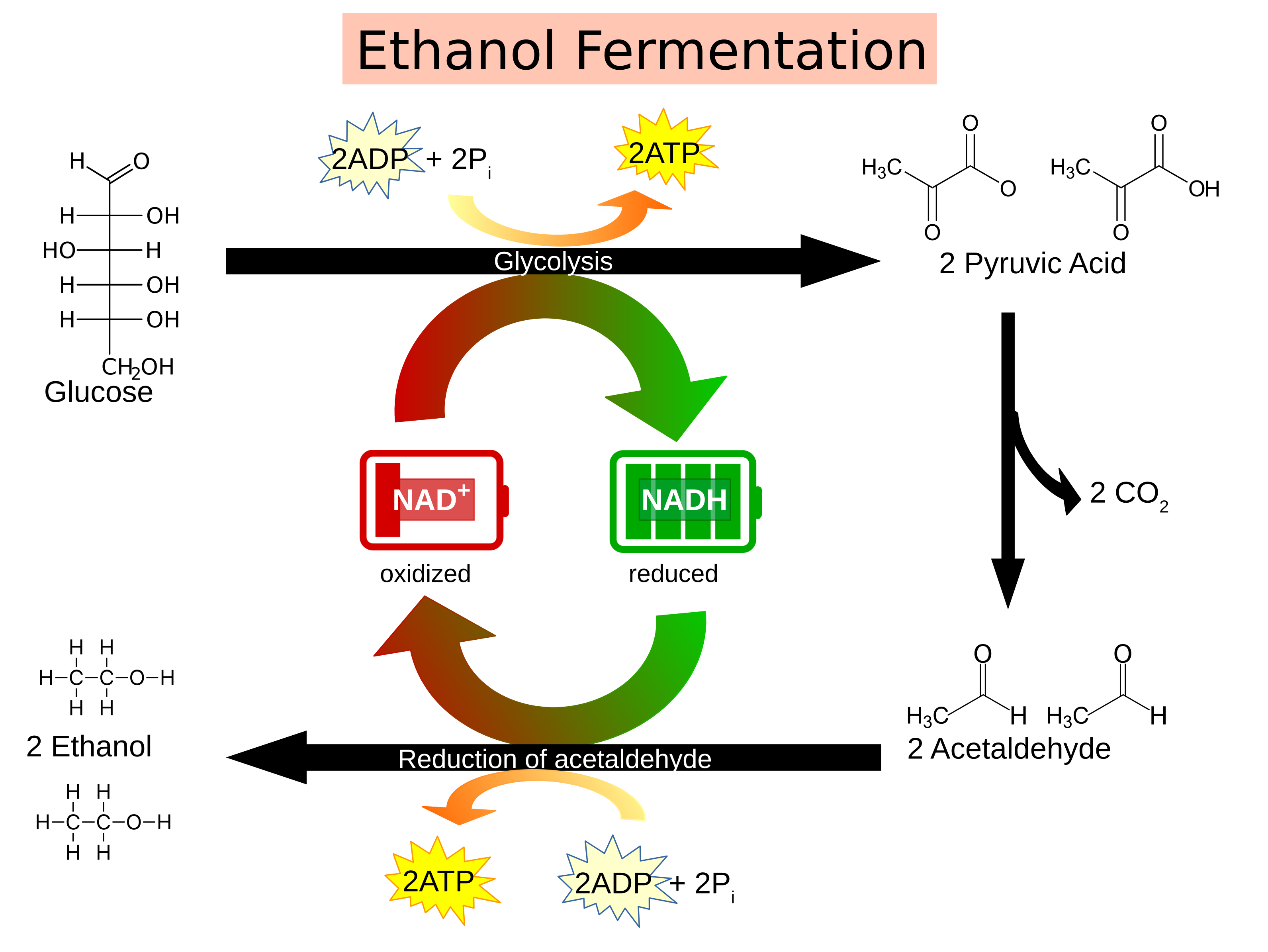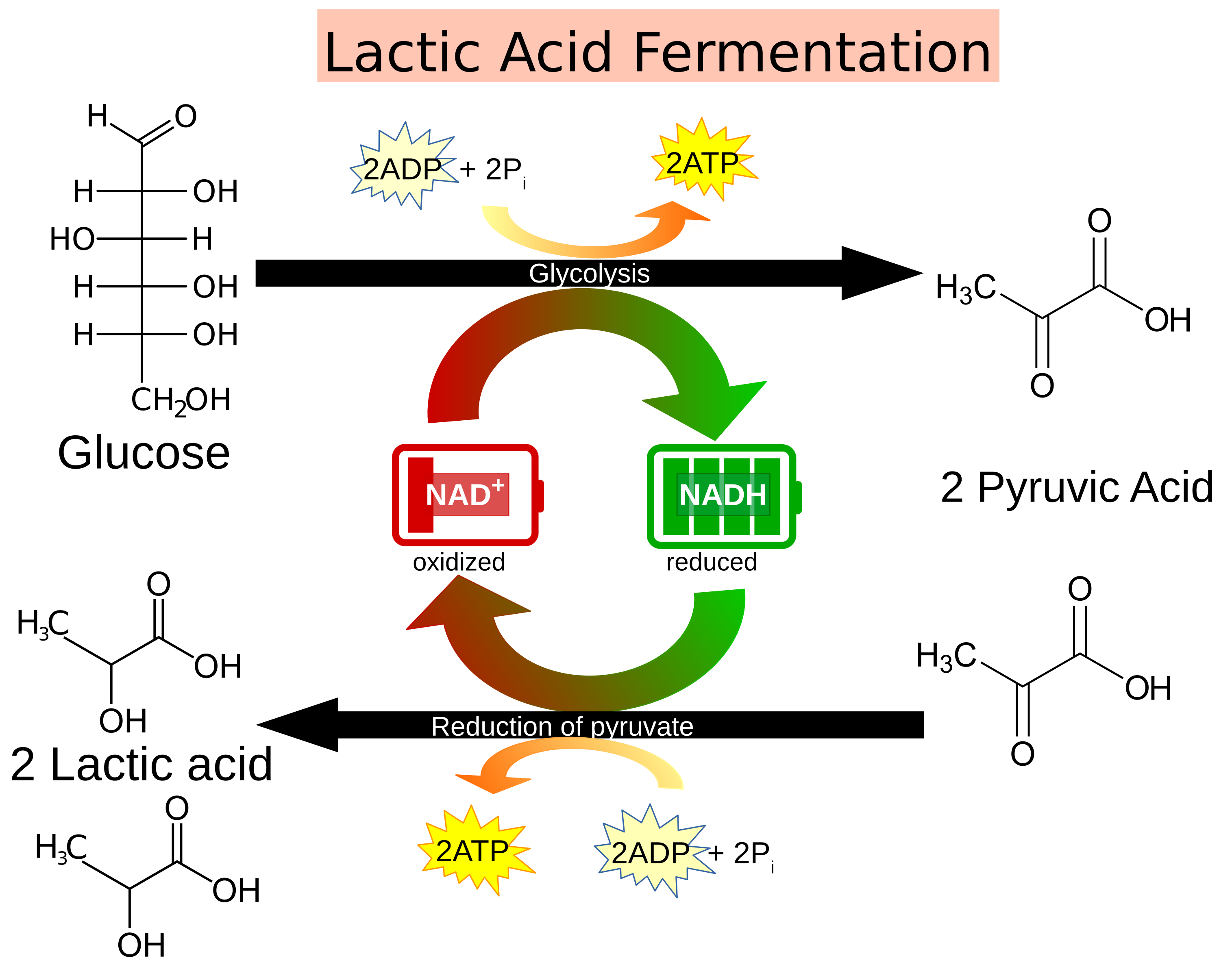In the absence of oxygen, cells may decide to utilize the pyruvate from glycolysis to rapidly generate additional ATP molecules in a process called fermentation. Fermentation is the anaerobic process of reducing pyruvate to generate ATP. This process uses the NADH generated from glycolysis as the reducing agents.
Fermentation is a familiar process that occurs in yeast to generate ethanol. Yeast are single-celled fungi. The species called Saccharomyces cerevisiae is commonly called baker’s or brewer’s yeast. Like other eukaryotes with mitochondria, yeast can use oxygen to generate ATP in the process of oxidative phosphorylation. These yeast are facultative aerobes which means they can also switch to anaerobic respiration (fermentation).
In humans, fermentation results in the production of lactic acid. Both lactic acid and ethanol are toxic, but this aids the cells in generating ATP when energy is required rapidly. Fermentation also generates CO2 as a waste molecule as pyruvate is broken down into a 2-carbon compound.





